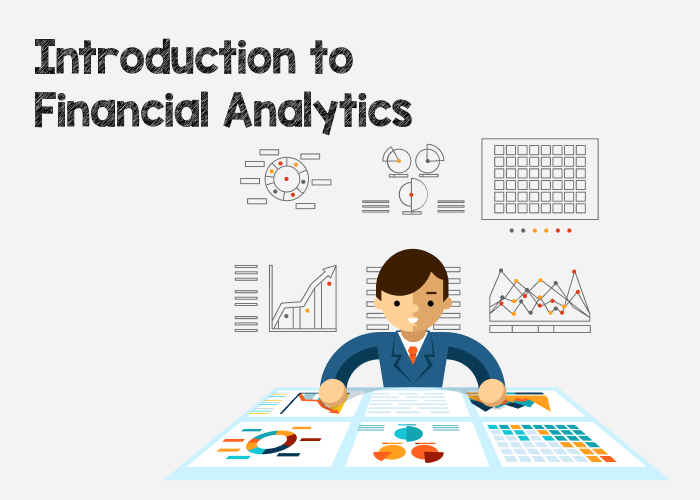Introduction to Financial Analytics

Financial analytics is a dynamic field that leverages data analysis, statistical modeling, and technology to interpret and forecast financial trends, support decision-making processes, and optimize financial performance. In an era where vast amounts of financial data are generated daily, it empowers businesses, investors, and finance professionals to derive meaningful insights, mitigate risks, and make informed strategic decisions.
It encompasses a range of activities, including the analysis of historical financial data, real-time monitoring of market conditions, and the use of predictive analytics to forecast future outcomes. It plays a crucial role in various sectors, such as banking, investment management, corporate finance, and risk management, providing stakeholders with the tools needed to navigate the complexities of the financial landscape.
Importance of Financial Analytics Tools
Companies must know why financial analysis is becoming increasingly crucial in today’s fast-paced world of corporate finance. Here are some of the reasons and benefits of analytic tools in businesses:
Trend Identification
Identifying and evaluating patterns may be a valuable technique in financial analytics. Enterprises may acquire significant insights into their industry’s position, profitability, and prospective development possibilities by evaluating data points over time.
Retailers, for example, may utilize finance analytics tools to track customer purchasing trends over the course of a year, maybe detecting that consumer demand surges around specific holidays or events like Christmas or Black Friday. They may use this information to design customized marketing initiatives to capitalize on that demand. Similarly, manufacturers may use finance analytics to discover areas where their manufacturing processes may be improved, such as minimizing unexpected downtime or boosting efficiency.
Wise Decision-Making
In today’s fast-paced business world, it is more important than ever for businesses to make quick choices based on solid information. Enterprises can notice performance patterns and trends and make long-term choices by evaluating financial data from analytical tools. Businesses can use financial data to analyze their current financial situation, including revenue, expenses, profit margins, and more. This analysis enables the companies to move resources or implement new strategies that could address problems they find, like inefficient processes or excessive prices.
Risk Management
Finance analytics tools in the company provide the capabilities to analyze risks and strategically implement reactive measures. For example, a bank can use analytics tools to examine its portfolio for loans and take defensive measures against high-risk loans. Similarly, businesses rely on financial analysis of sales data to identify items with high returns; following that, relevant steps should be taken to enhance product quality or update return policy to avoid consumer displeasure and financial concerns.
Cost Management
Efficient cost management is critical for business sustainability. Analytics tools help organizations identify areas of unnecessary expenditure, optimize resource allocation, and implement cost-saving measures, contributing to improved profitability.
Improved Financial Transparency
Financial Analytics tools enhance transparency by providing stakeholders, executives, investors, and regulatory bodies, with clear and comprehensive financial information. This transparency builds trust and confidence in the organization’s financial management.
Conclusion
Financial analytics harnesses the power of data analysis, statistical modeling, and technology to interpret financial data, uncover patterns, and make informed decisions. It encompasses a range of activities aimed at understanding historical financial performance, predicting future trends, and optimizing strategies for financial success. It plays a pivotal role in sectors such as banking, investment management, corporate finance, and risk management, providing stakeholders with invaluable insights into the complexities of the financial landscape.
FAQs
What is the role of analytics in finance and investment management?
Analytics in investment management involves analyzing market trends, assessing risk, and making data-driven investment decisions to optimize portfolio performance.
How does financial analysis contribute to risk management?
It helps identify, assess, and mitigate financial risks by analyzing historical data, predicting potential risks, and recommending strategies to safeguard assets.
What are the key components of financial analytics?
Key components include data management, descriptive analytics, predictive analytics, prescriptive analytics, risk management, performance measurement, fraud detection, and regulatory compliance.
How does financial analysis support regulatory compliance?
It assists in monitoring and reporting activities to ensure compliance with financial regulations. It helps organizations adhere to legal standards and practices.
Is financial analytics only applicable to large businesses?
No, it is applicable to businesses of all sizes. Small and medium-sized enterprises can benefit from analytics in managing budgets, optimizing operations, and making informed financial decisions.
Shivangi is a passionate Copywriter at Alian Software with expertise in technical copywriting. She shares information that is easy to understand regarding business, technology, and trends.